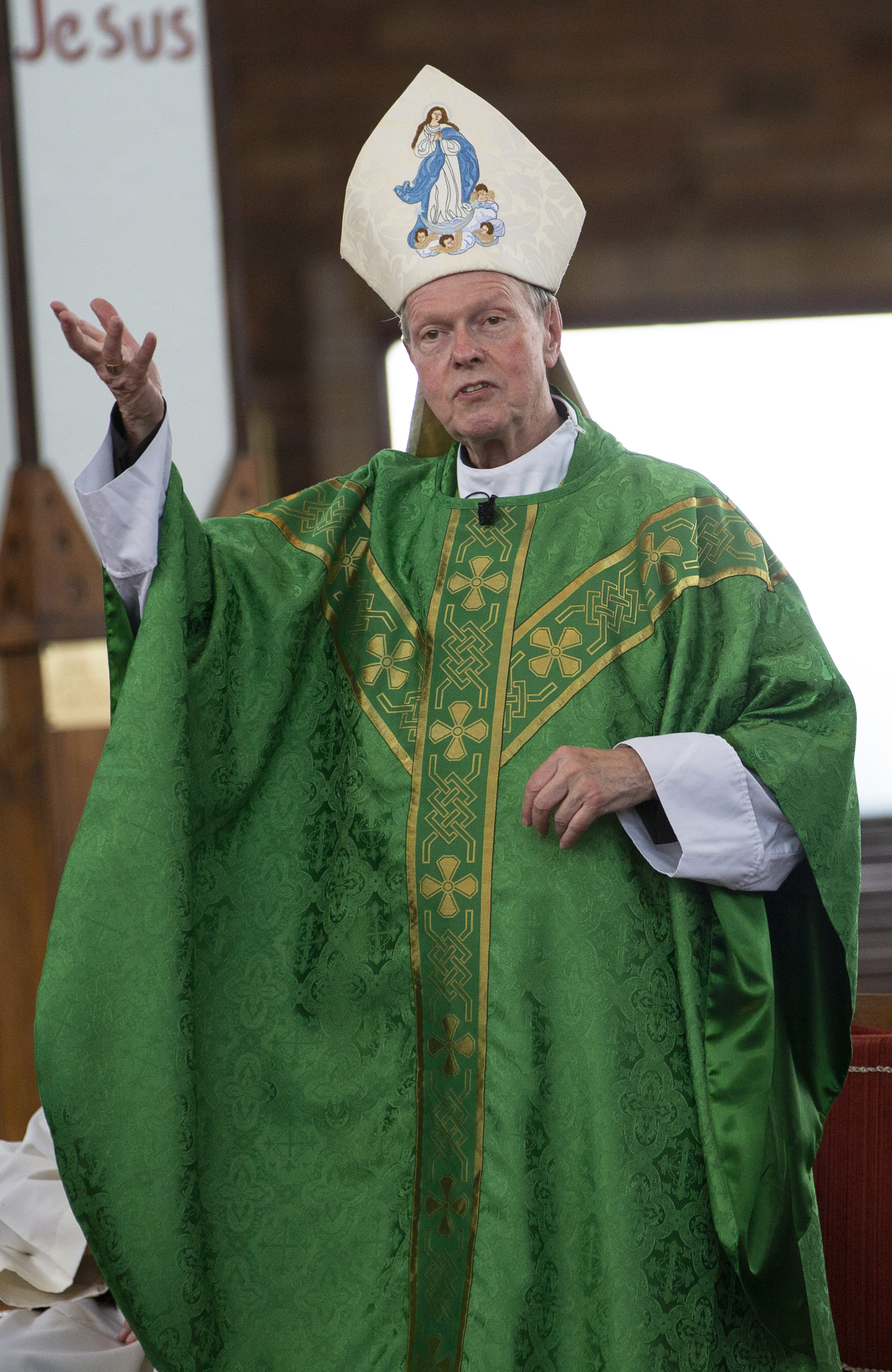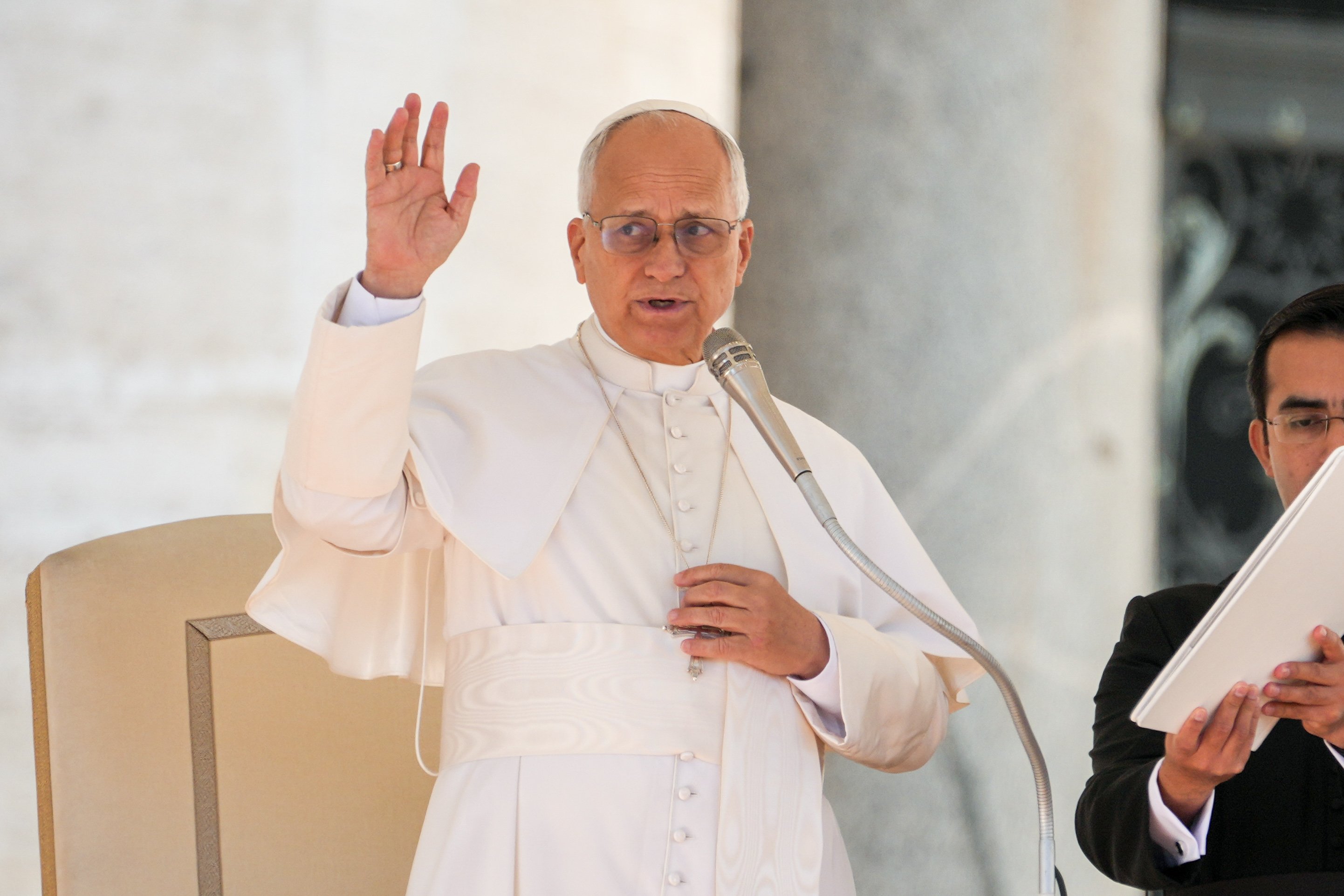April 6, 2018 at 1:53 p.m.
REFLECTION
Why celebrate dedication of the Lateran Basilica?
This weekend, here we are again! Instead of the Sunday Mass and readings, we celebrate the dedication of the Basilica and Cathedral of St. John Lateran. What is this and why is it so important as to "bump" the usual Sunday Mass?
To help answer that, we need a quick lesson in Church history and geography! Every church, including your own parish church, is "dedicated." Usually, this happens once the debt incurred in its construction has been paid off. There also may be a rededication of a church after major renovations (as with Albany's Cathedral of the Immaculate Conception a couple of years ago).
The rite of dedication is a beautiful occasion, full of symbol and ritual. It is a huge event in the life of any parish. Our feast day this weekend marks the time, in 324 AD, when the Cathedral and Basilica of St. John Lateran was dedicated.
Why celebrate the dedication of this particular church? It is the oldest and principal church in Rome; it is also the pope's cathedral as Bishop of Rome (not St. Peter's, as many think). For these reasons, it is seen as the "mother church" of every church in the world. It shows our link, our unity with the Holy Father and with every other Diocese, bishop and parish community in the world. It is a visible sign of the whole Church, the body of Christ that is all of us - here and in every place and time throughout the world and throughout history. That's quite a thought!
Why so much fuss over a building? Churches are bricks and mortar and they, like other buildings, come and go. Indeed, there have been four re-buildings of the Lateran Basilica in Rome.
It is true that we can still have a Church or parish community without an actual church building. We can pray anywhere; the people are the "living stones," more important than any physical structure alone.
However, this weekend's feast day can help us reflect about the importance of a church building and its rich symbolism and meaning. It invites us to look around our own church, reflecting on this symbolism. We can be so familiar with our church that we can easily ignore its rich symbolism or simply take it for granted.
Begin with the altar, a focus in any church. The altar is a symbol of Christ's presence and His sacrifice for us; this is why we bow to the altar or kiss it. Most altars are covered with a cloth, but if we take off the cloth, we notice five crosses on it that represent the five wounds of Christ (on His hands, feet and side).
Inside most altars are some relics of saints, especially the martyrs. This reminds us that we are the body of Christ and that we are linked to the Church throughout history and that, like the saints, we are called to be witnesses to Christ.
The ambo is the "table of God's Word." Here, we hear proclaimed the "Word of the Lord" and the "Gospel of the Lord." It is a reminder that the Lord feeds us and is present to us not only in the Eucharist, but also in His Word. Our two altars or tables also reinforce the structure of the Mass - the Liturgy of the Word and then the Liturgy of the Eucharist.
A number of churches have stained glass windows depicting scenes from Scripture, Christian symbols or saints. The windows teach and remind us about key parts of our faith. (How important this must have been back in the days when many folks could not read or write!)
If the church is in darkness, the windows' beauty is hidden. Light reveals their true nature and beauty. This is a symbol of us: We need the light of Christ to shine through us, otherwise we will remain in darkness.
The candles in church remind us that Christ is the light that shines on us and guides us. Our faith and love should be like the candle's living flame, burning bright!
Many churches have Stations of the Cross. We usually focus on these during Lent, but at any time of the year, they can call to mind that we are disciples of Jesus and that He calls us to follow in His footsteps. We are called to take up our cross and follow Him.
The tabernacle is a vital focus in any church. Some churches have a special chapel dedicated to this and also have organized periods of adoration of the Blessed Sacrament. The word "tabernacle" means "tent" or "hut;" it is derived from the tent of meeting or the presence of the Lord in the holy of holies in ancient Israel.
The structure of a church, its shape and design, is also symbolic. Any building stands rather than collapses due to its design and engineering; there are different materials and functions, different stresses and strains that counterbalance each other. This is a symbol of our diversity yet unity as a Church community. We are different and bring diverse gifts and roles, yet we are one - and if we are missing some of this, the structure is weakened and poorer.
We are part of the church building and its rich symbolism. Without us, a church might be a beautiful building, but it would be dead, without a heart. As we leave Mass, we must carry from our church a sense of being a living Church, the body of Christ, and take the presence of Christ to all those who have not been with us in church today.
(Father Barratt is pastor of St. Ambrose parish in Latham. He holds a doctorate in theology and was a professor at St. John's Seminary in England before coming to the U.S. in 2004.)
SOCIAL MEDIA
OSV NEWS
- US bishops advance new sainthood cause for ‘Good Samaritan’ Jesuit priest
- USCCB president warns against partisanship; nuncio urges bishops to follow pope’s ‘maps of hope’
- New English version of Bible to be called The Catholic American Bible
- Churches should be joyful places of sharing gift of faith, pope says
- ‘Leo from Chicago:’ Vatican releases new documentary on pope’s early years
- Archbishop Coakley and Bishop Flores are elected president and vice president of USCCB
- Survey: Young adult Catholics are the most engaged and most at risk of leaving the church
- U.S. bishops to Pope Leo: We ‘will continue to stand with migrants and defend everyone’s right to worship free from intimidation’
- Catholics in Mexico oppose proposed online media gag law
- First plenary of French bishops under Cardinal Aveline discusses turbulent topics







Comments:
You must login to comment.